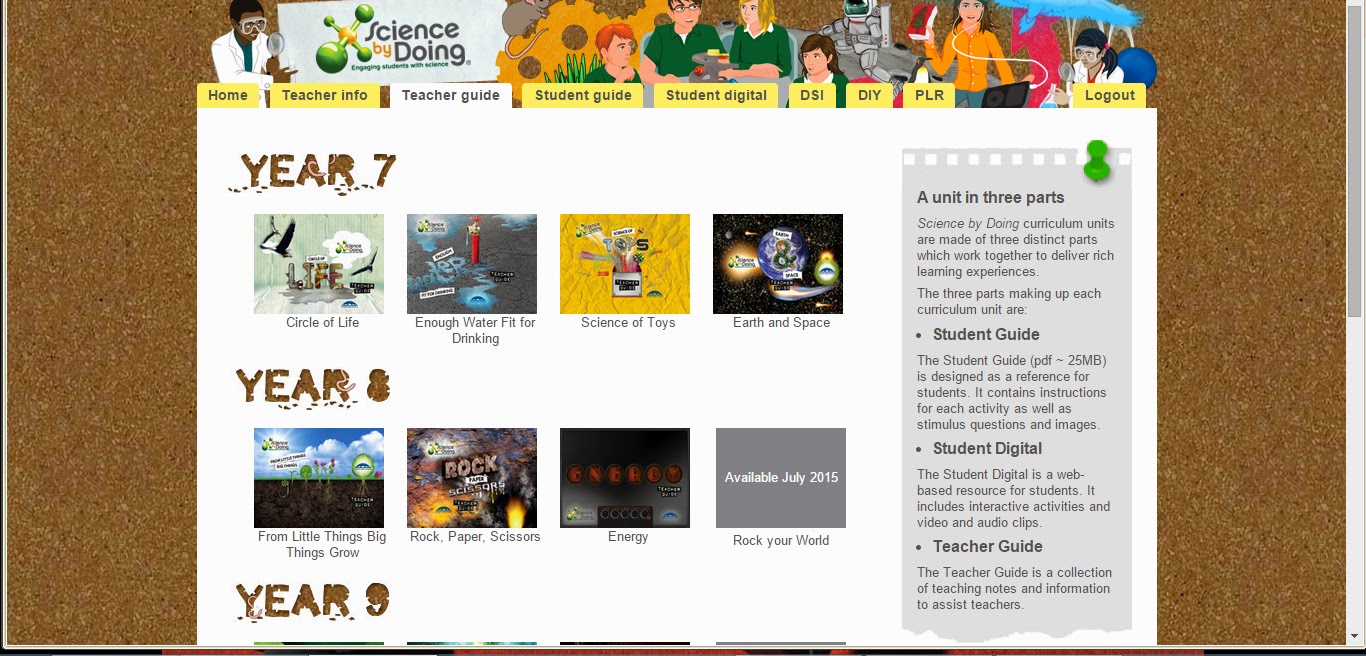Introduction
Science by doing is a content based website which has the science syllabus split up into contexts. These contexts are complete with detailed activities for teachers and students alike. Although this website requires creating an account and having this account approved, it is completely free for anyone, regardless of if they have a university or school email. This website is engaging as it teaches students content through a combination of videos, interactive animations and quizzes. This should hopefully keep students engaged by having a variety of activities to learn content, as opposed to just being taught through direct instruction in the classroom.
Instructions
When undertaking a unit, students could spend roughly 50% of a class going through the activities in their topic, and spend the remainder doing pracs or having class discussions about the content they've learnt. Here the example I use is the stage 5 (year 9) topic "Light, Sound Action".
First, the teacher should download the teacher packs for the topic which can be found by clicking the teacher tab on the homepage, then scrolling down to "Light, Sound, Action" under the year 9 topics heading. The teacher can then use the activities pack as a guide for class practicals and experiments throughout the unit.
Students access the content through the "student" tab at the top of the screen, and can then download the student guide. The student guide works as a kind of an interactive textbook they can work through in class to learn all the content they need to for a unit.
They can then click on the "student digital" tab at the top of the screen and work through the videos, activities and animations under each section.
Outcomes Covered
Stage 5
SC5-7WS processes, analyses and evaluates data from first-hand investigations and secondary sources to develop evidence-based arguments and conclusions
SC5-11PW explains how scientific understanding about energy conservation, transfers and transformations is applied in systems
SC5-10PW applies models, theories and laws to explain situations involving energy, force and motion
PW1 Energy transfer through different mediums can be explained using wave and particle models. (ACSSU182)
Students:
a. explain, in terms of the particle model, the processes underlying convection and conduction of heat energy
b. identify situations where waves transfer energy
c. describe qualitatively, using the wave model, the features of waves including wavelength, frequency and speed
c. describe qualitatively, using the wave model, the features of waves including wavelength, frequency and speed
d. explain, using the particle model, the transmission of sound in different mediums
e. relate the properties of different types of radiation in the electromagnetic spectrum to their uses in everyday life, including communications technology
f. describe the occurrence and some applications of absorption, reflection and refraction in everyday situations
e. relate the properties of different types of radiation in the electromagnetic spectrum to their uses in everyday life, including communications technology
f. describe the occurrence and some applications of absorption, reflection and refraction in everyday situations







No comments:
Post a Comment